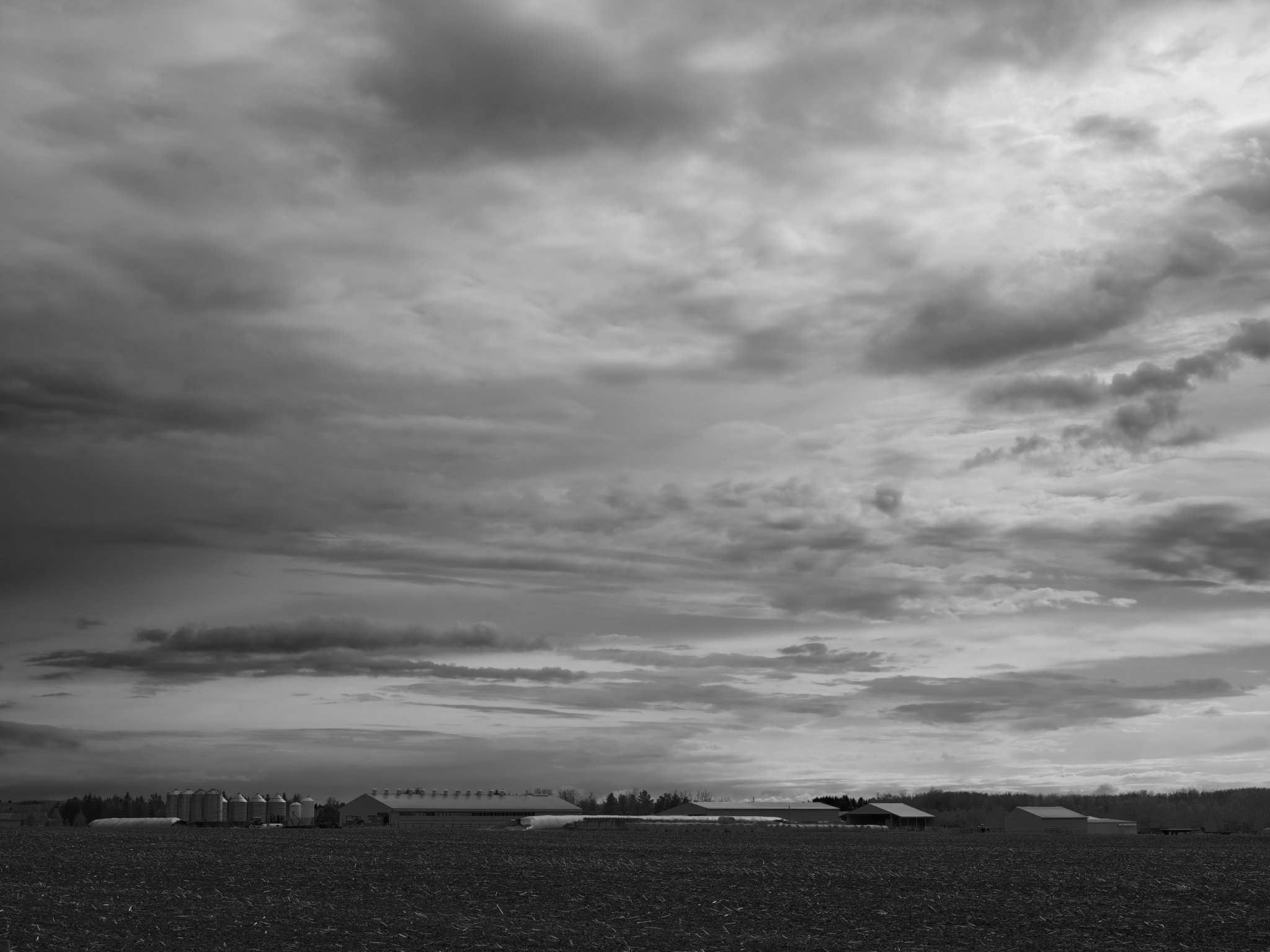Farmland photography: May update (2023)
Taking on a journey through the Canadian prairies for a 5-year photography spree, I've found myself snapping up Alberta's farmlands like a hungry toddler at a cake buffet. My aim? To bring you monthly updates (whenever possible) and, at some point, get friendly with the local farmers to add an extra sprinkle of authenticity to my photography tales.
May is a weird season for photography. You are sandwiched between the minimalist winter and green summer. It's a liminal space for the Canadian landscape where life is almost there, and not yet. May sun thawed the snow, mostly exposing dead plants and brown ground in preparation for the lush green that potentially sprouts in the next few weeks.
Unfortunately, wildfire-ravaged (and still going on) Alberta throughout late spring due to the dry weather, and there wasn't much hope for lush green to return any sooner. I remember seeing lush landscapes in May the previous year and the years before. The entire Alberta (and perhaps other provinces) waits for the rain.
A bit on that wildfire
The 2023 Alberta wildfires have ravaged over 842,000 hectares, resulting in over 29,000 people being evacuated and a state of emergency being declared. As of May 20, there were 91 active wildfires, 25 out of control. Not to add to the burden of rescuing another person, I did not venture into the wildfire areas for photography.
You can follow wildfire news and photographs (of other photographers) on the links below:
Link of all links - Alberta Wildfire Updates
May 07, 2023
With no greeneries springing (pun intended) into life anytime soon, I decided to scale down my photography and make it minimalist black and white. Despite being skeptical, I went out as usual on a Sunday morning to photograph the beautiful spring life. Bare lands and dull skies justified my skepticism. The wildfire smoke spared southern Alberta but not so much in the East of Canada.
With only the above photo being the best for the trip, I wound up and returned home for post-processing.
May 28, 2023
A few casual trips in between did not inspire me to stop and photograph anything (I should have snapped a few decent ones). After spending a weekend visiting Drumheller (I regret not photographing a few beautiful farmlands on my way to Drumheller since it was pitch dark when we returned, and I could not snap a single thing), I went out on the 28th afternoon with my youngest son (17 months old) at the back seat.
Edmonton and its surroundings are not prone to dramatic tornados and storms. However, we receive occasional mild ones to venture out safely and photograph them like today. The best place for storm photography in Alberta is between Red Deer and Airdrie.
Everything started as good clouds and a pleasant afternoon, but eventually dark and cloudy. The clouds with plenty of water start forming and attempt to make a storm or tornado despite being very hard to develop one with only 45 mph wind and little moisture in that area. However, it provided some good photographs with the backdrop of farmland structures. I mostly used the Fujifilm GF 20-35mmF4 to its widest angle. I was concerned with the lens' ability to get sharp pictures due to the strong wind making my already shaky hands even more shaky.
However, the IBIS on the Fujifilm GFX-100s seems to be sufficient to help photograph some good ones. Eventually, they all fizzled out, and I drove home to process the photographs.
A word on the GF 20-35mmF4
The Fujifilm GF 20-35mmF4 lens is a versatile wide-angle zoom lens that complements Fujifilm's GFX medium format camera system. It provides an equivalent focal length range of 16-28mm, making it a flexible choice for landscape, architecture, and interior photography. The lens is designed to deliver superior image quality with high resolution, edge-to-edge sharpness, and minimal distortion.
I can vouch for the image quality that I almost get the results of another superior and yet to review Fujifilm GF 32-64mmF4. I am not obsessed with edge-to-edge sharpness, but as usual, with all zoom lenses, the Fujifilm GF 20-35mmF4 excels in edge-to-edge sharpness in all focal lengths except when it's zoomed out to the max and aperture above F11. However, I will need a few months to test it in the field before writing more about it. The Fujifilm GF 32-64mmF4 review may precede another Fujifilm GF 20-35mm lens update since I have used the Fujifilm GF 32-64mmF4 longer.
It features a robust build with weather sealing, making it suitable for use in harsh outdoor conditions. The weather sealing came to my aid when I was photographing the sort-of storm on the 28th. The lens was nearly drenched but did not miss a beat.
This lens is a permanent addition to my farmland photography.












